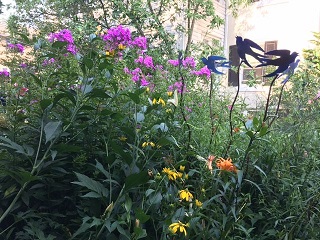Members' Garden Tour
About the Members' Garden Tour
The annual Members' Garden Tour is the highlight of our summer season! Organized by the Vice-President, this much-anticipated event takes months of planning and showcases a selection of beautiful private gardens - many belonging to our own HPS/MAG members. The day concludes with a delightful reception.
Over the years, our tours have taken us to West Chester, Kennett Square, Media, Berks County, Bucks County, Wilmington, Delaware, and many charming sections of Philadelphia.
Advance registration is required.
Save the Date for the 2026 Members' Garden Tour on Saturday, June 6, 2026 in the Wilmington, Delaware Area.
Volunteer Opportunities
Help make the 2026 tour our best yet! Volunteers are needed for the following committees:
Planning Committee
Garden Liaison Committee
Volunteer Liaison Committee
Reception Committee
Hospitality Committee
Plant Give-Away Committee
|

